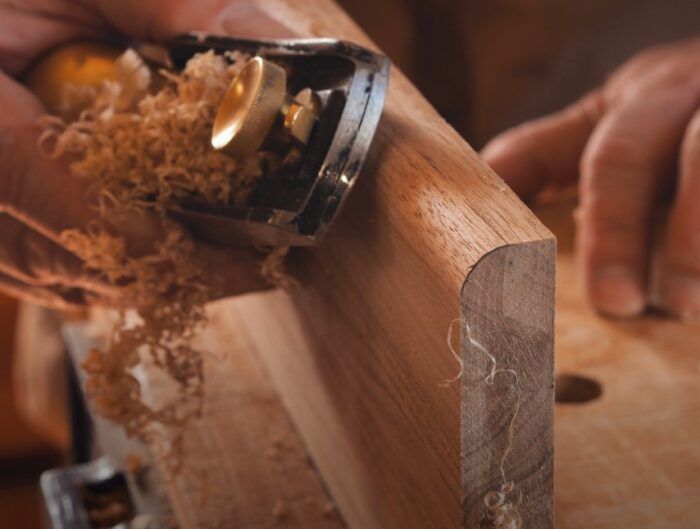Standard vs. Low-Angle Block Planes
The cutting angle is the key to success with these workshop workhorses. Here's why it matters.
A low-angle block plane is a great tool, and I often find myself reaching for it several times a day when I need to plane end grain, cross grain and miters. A block plane excels at trimming excess material from the pins and tails of through-dovetail joints; fine-tuning miters; perfecting the reveal on cabinet doors; cleaning up saw marks on the ends of tabletops, shelves and panels; and softening the edges of a board.
A block plane is distinguished by the blade’s upward-facing bevel. This contrasts with a bench plane, where the bevel faces down. To appreciate the difference you have to look at the geometry of each type of plane. The standard bench plane has the blade bedded at 45°. Because the bevel faces down, changes to the bevel angle of a bench-plane blade have no impact on the cutting angle of the tool. Low-angle block planes, on the other hand, have the blade bedded at 12° to 12 1/2° and the bevel angle of the blade at 25° after sharpening. The effective angle of the plane is the sum of the bed and bevel angles—37° for the block plane as opposed to 45° for a bench plane.
A low-angle block plane
A low-angle block plane has a 12° bed angle and a 25° bevel angle, which makes the effective cutting angle 37°. That design works better on end grain and cross grain.
A standard angle block plane
A standard angle block plane has a 20° bed angle and a 25° bevel angle, making
the effective cutting angle 45°, which is essentially the same as that of a bench plane.
Which block plane is best?
When it comes to block planes, you can buy a version that has a low cutting angle, or you can buy what I call a standard-angle plane. The low-angle block plane is a better choice for trimming end grain and cross grain, as when you true a miter joint or pare down a too-fat tenon.
For other tasks that require trimming with the grain, such as chamfers on a tabletop, the low-angle design generally works better on softwoods, and the standard version is suitable for hardwoods

 |
Bevel-Up Low-Angle Jack Plane is a Workshop Workhorse |
 |
Restoring Handplanes: The Parts of a Bench Plane |
 |
All about Block Planes |
Fine Woodworking Recommended Products

Starrett 12-in. combination square

Festool DF 500 Q-Set Domino Joiner

Marking knife: Hock Double-Bevel Violin Knife, 3/4 in.























Comments
I think it's worth noting that with a spare blade you can have the best of both worlds. Buy a Low Angle Block Plane and sharpen one blade at 25° and the spare at 35°. Just swap the blade as required for the job at hand.
I would have liked to see:
* suspected etymology of “block plane” – some folks say it’s what carpenters used for trimming blocking between joists, and other theories about butcher blocks
* if you hone a microbevel you can change any bevel-up plane’s effective angle. I don’t know why you would ever want a non-low angle bevel up plane since it just gives you less flexibility. Would love to hear more about why “high-angle bevel up” is on the market
Log in or create an account to post a comment.
Sign up Log in